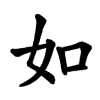Definify.com
Definition 2025
起
起
Translingual
| Stroke order | |||
|---|---|---|---|

| |||
| Stroke order | |||
|---|---|---|---|

| |||
Alternative forms
The component in the top right corner can be 己 or 巳.
Han character
起 (radical 156 走+3, 10 strokes, cangjie input 土人口山 (GORU) or 土人尸山 (GOSU), four-corner 47801, composition ⿺走巳 or ⿺走己)
References
- KangXi: page 1215, character 15
- Dai Kanwa Jiten: character 37048
- Dae Jaweon: page 1683, character 18
- Hanyu Da Zidian: volume 5, page 3476, character 2
- Unihan data for U+8D77
Chinese
|
simp. and trad. |
起 | |
|---|---|---|
Glyph origin
| Historical forms of the character 起
| |
|---|---|
| Large seal script | Small seal script |
 |
 |
| Characters in the same phonetic series (巳) (Zhengzhang, 2003) | |
|---|---|
| Old Chinese | |
| 巳 | *ljɯʔ, *lɯs |
| 祀 | *ljɯʔ |
| 汜 | *ljɯʔ |
| 戺 | *zrɯʔ |
| 起 | *kʰɯʔ |
| 熙 | *qʰlɯ |
| 媐 | *qʰlɯ, *lɯ |
| 圯 | *lɯ |
| 异 | *lɯ, *lɯs |
| 巸 | *lɯ |
Phono-semantic compound (形聲, OC *kʰɯʔ) : semantic 走 + phonetic 己 (OC *kɯʔ).
Pronunciation
- Mandarin
- Cantonese (Jyutping): hei2
- Hakka (Sixian, PFS): hí
- Min Dong (BUC): kī
- Min Nan (POJ): khí
- Wu (Wiktionary): qi (T2)
- Mandarin
- (Standard Chinese, Beijing)+
- Pinyin:
- Zhuyin: ㄑㄧˇ
- Wade-Giles: ch'ih3
- Gwoyeu Romatzyh: chii
- IPA (key): /t͡ɕʰi²¹⁴/
-

- (Standard Chinese, Beijing)+
- Cantonese
- (Standard Cantonese, Guangzhou)+
- Jyutping: hei2
- Yale: héi
- Cantonese Pinyin: hei2
- IPA (key): /hei̯³⁵/
- (Standard Cantonese, Guangzhou)+
- Hakka
- (Sixian, incl. Miaoli and Meinong)
- Pha̍k-fa-sṳ: hí
- Hakka Romanization System: hi`
- Hagfa Pinyim: hi3
- IPA: /hi³¹/
- (Sixian, incl. Miaoli and Meinong)
- Min Dong
- (Fuzhou)
- Bàng-uâ-cê: kī
- IPA (key): /kʰi³³/
- (Fuzhou)
- Min Nan
- (Hokkien)
- Pe̍h-ōe-jī: khí
- Tâi-lô: khí
- Phofsit Daibuun: qie
- IPA (Xiamen): /kʰi⁵³/
- IPA (Quanzhou): /kʰi⁵⁵⁴/
- IPA (Zhangzhou): /kʰi⁵³/
- IPA (Taipei): /kʰi⁵³/
- IPA (Kaohsiung): /kʰi⁴¹/
- (Hokkien)
- Wu
- (Shanghainese)
- Wiktionary: qi (T2)
- IPA (key): /t͡ɕʰi³⁴/
- (Shanghainese)
| Rime | |
|---|---|
| Character | 起 |
| Reading # | 1/1 |
| Initial (聲) | 溪 (29) |
| Final (韻) | 之 (19) |
| Tone (調) | Rising (X) |
| Openness (開合) | Open |
| Division (等) | III |
| Fanqie | 墟里切 |
| Reconstructions | |
| Zhengzhang Shangfang |
/kʰɨX/ |
| Pan Wuyun |
/kʰɨX/ |
| Shao Rongfen |
/kʰieX/ |
| Edwin Pulleyblank |
/kʰɨX/ |
| Li Rong |
/kʰiəX/ |
| Wang Li |
/kʰĭəX/ |
| Bernard Karlgren |
/kʰiX/ |
| Expected Mandarin Reflex |
qǐ |
| Zhengzhang system (2003) | |
|---|---|
| Character | 起 |
| Reading # | 1/1 |
| No. | 12011 |
| Phonetic component |
巳 |
| Rime group |
之 |
| Rime subdivision |
0 |
| Corresponding MC rime |
起 |
| Old Chinese |
/*kʰɯʔ/ |
| Notes | 說文巳聲非己聲 |
Definitions
起
- to rise; to go up; to move up
- to stand up; to rise
- to break out; to grow
- to start; to begin; to become; to take
- to initiate; to instigate; to trigger off
- (dialectal Mandarin, Cantonese, Hakka, Min, Wu) to construct; to build
- to prepare; to draw up; to come up with
- to extract; to pull out; to remove
- (in 從/由……起 structures) from
- particle placed after verbs to indicate upward movement; ... up
- particle placed after verbs to indicate the beginning of a continued action
- (used with 不 or 得 after verbs) up to a certain standard; to be able to stand or afford
- particle placed after verbs to indicate the involvement of a person or thing in the action
- Classifier for incidents.
- Classifier for batches or groups.
Compounds
Derived terms from 起
|
|
|
Japanese
Kanji
起
- to rise, to wake up
- to rise, to stand up
Readings
Compounds
Compounds
Korean
Hanja
起 • (gi) (hangeul 기, revised gi, McCune-Reischauer ki, Yale ki)
- This term needs a translation to English. Please help out and add a translation, then remove the text
{{rfdef}}.
Vietnamese
Han character
起 (khởi, khỉ)
- This term needs a translation to English. Please help out and add a translation, then remove the text
{{rfdef}}.